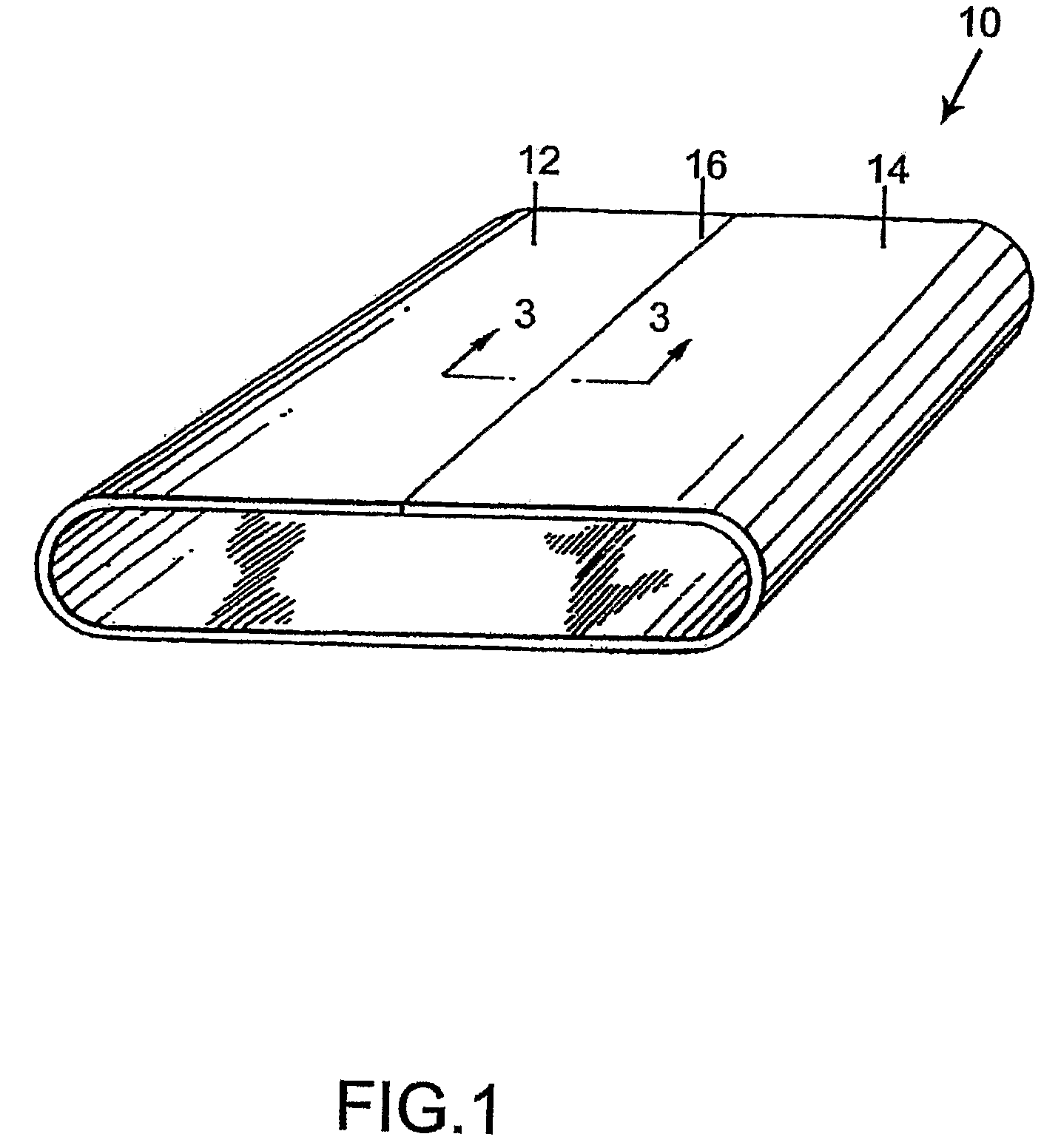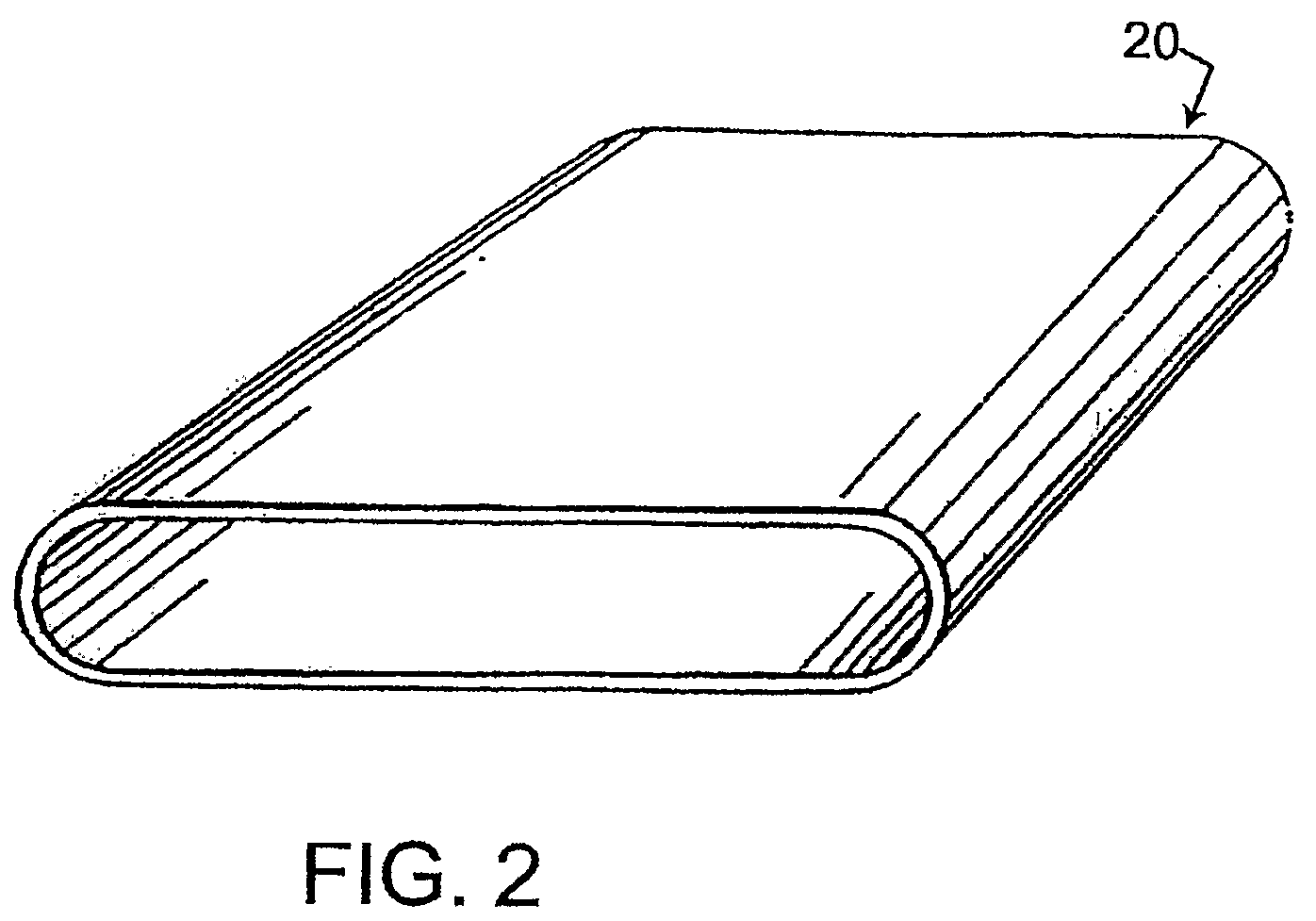Passive sensor system for detection of wear problems in paper machine clothing
a sensor system and wear problem technology, applied in the field of passive sensor system for detection of wear problems in paper machine clothing, can solve the problems of paper machine clothing wear, difficulty in streamlined manufacturing process, and difficulty in providing a stratified press fabric free of needle tracks,
- Summary
- Abstract
- Description
- Claims
- Application Information
AI Technical Summary
Benefits of technology
Problems solved by technology
Method used
Image
Examples
Embodiment Construction
[0033]Turning now to these figures, FIG. 1 is a schematic perspective view of the press fabric 10 of the present invention. Press fabric 10 is of the on-machine-seamable variety and takes the form of an endless loop once its two ends 12,14 have been joined to one another at seam 16.
[0034]In an alternate embodiment, as shown in schematic perspective view in FIG. 2, press fabric 20 has no seam and is in the form of an endless loop.
[0035]FIG. 3 is a cross-sectional view taken as indicated by line 3-3 in FIG. 1. Press fabric 10 includes a base fabric 30. In general, the base fabric 30 may be a woven, nonwoven, nonwoven arrays of MD or CD oriented yarns, knitted or braided structure of yarns of the varieties used in the production of paper machine clothing, such as monofilament, plied monofilament and / or multifilament yarns extruded from polymeric resin materials. Resins from the families of polyamide, polyester, polyurethane, polyaramid and polyolefin resins may be used for this purpose...
PUM
| Property | Measurement | Unit |
|---|---|---|
| angle | aaaaa | aaaaa |
| width | aaaaa | aaaaa |
| width | aaaaa | aaaaa |
Abstract
Description
Claims
Application Information
 Login to View More
Login to View More - R&D
- Intellectual Property
- Life Sciences
- Materials
- Tech Scout
- Unparalleled Data Quality
- Higher Quality Content
- 60% Fewer Hallucinations
Browse by: Latest US Patents, China's latest patents, Technical Efficacy Thesaurus, Application Domain, Technology Topic, Popular Technical Reports.
© 2025 PatSnap. All rights reserved.Legal|Privacy policy|Modern Slavery Act Transparency Statement|Sitemap|About US| Contact US: help@patsnap.com



